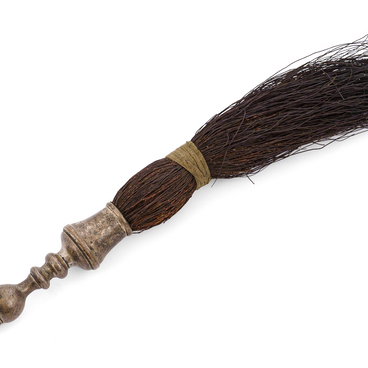The candia is a church vessel in the shape of a bowl, used as a dining cup, bell, or vessel for blessing water. According to Russian written sources and inscriptions on objects, candia could also be referred to as kandea, kondeya, kandyika, kandeika, yasak, zvonok, or zvonka.
The tradition of striking a bowl or dish or ringing a bell during a monastic meal, in order to maintain silence in the monastery, has been known since ancient times. This custom is still preserved today in ancient Greek monasteries, such as the Monastery of Saint Catherine on Sinai.
During the divine service, strikes on the edge of the candia served as a signal to the bell ringer that it was time to ring the bell in the belfry. An inventory of the Joseph-Volokolamsk Monastery from 1545 states that the candia was intended for ringing on major feast days during the liturgy before the reading of the Gospel.
The candia is often mentioned in sources from the time when the sprinkling of holy water became part of public worship.
Candiae were made from various metals. Medieval vessels were typically made of bronze, though later, brass became the primary material. There were also candiae made from precious metals, particularly silver and even gold, but such examples are rare.
Candiae could be richly decorated. In addition to floral and animal ornamentation and Christian symbolism, candiae often feature relief images of Christ, the Virgin Mary, angels, apostles, and saints, as well as biblical scenes and depictions of church life. Sacred vessels frequently bore biblical quotes related to water, as well as other relevant texts.
The Holy Fathers teach that earthly objects are images of the spiritual world — this is why one can see spiritual symbolism in any natural phenomenon. The two-part bowl symbolizes the unity of the earthly and heavenly Church.
The water-blessing bowl
symbolically points to the Virgin Mary, who, in poetic services, is referred to
as “the Bowl that draws joy.” The similarity between the water-blessing bowl
and the liturgical communion chalice is not coincidental. It indicates that the
Eucharist is the main sacrament of the Church, for which everything else
exists. In Communion, we unite with Christ to live in Him — and for this, we
receive Baptism and strive to sanctify the entirety of our existence (for which
water-blessing public prayers are served).







